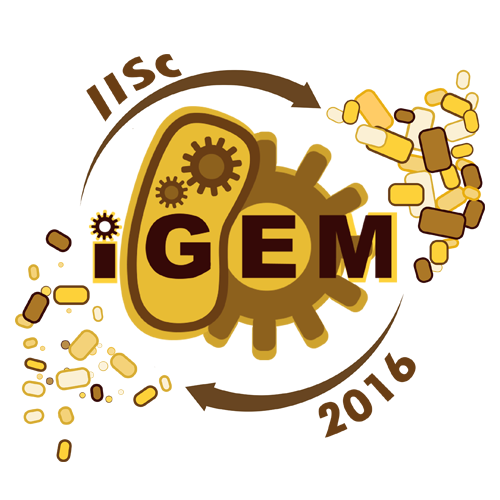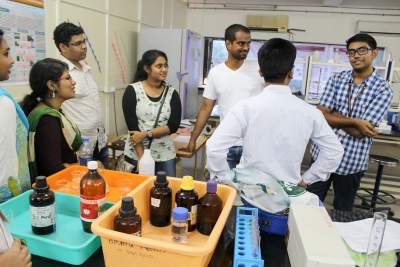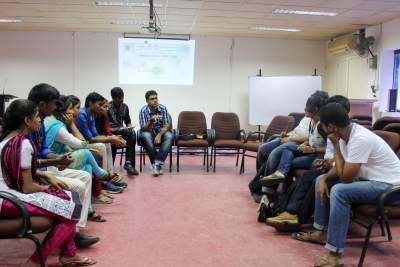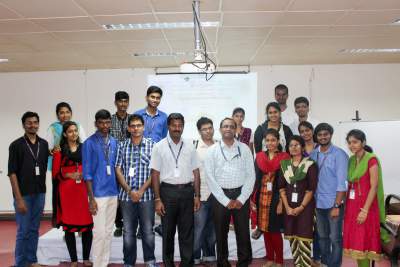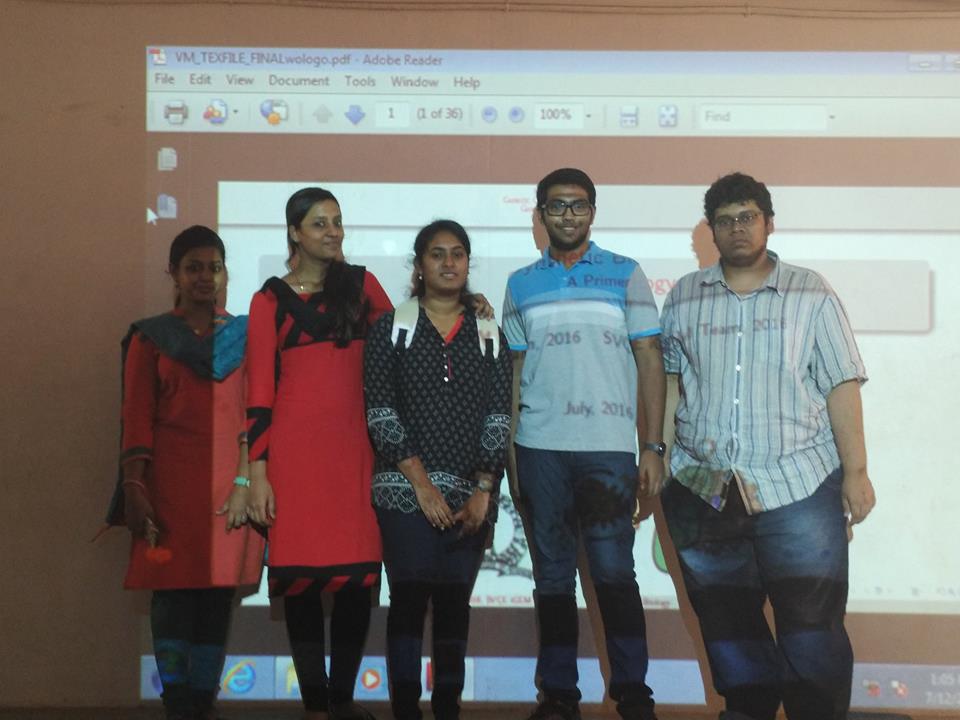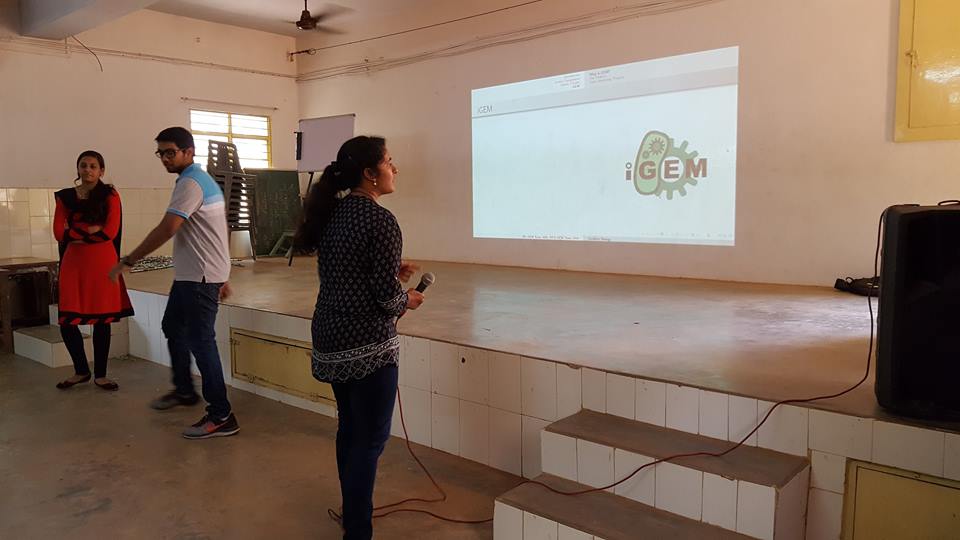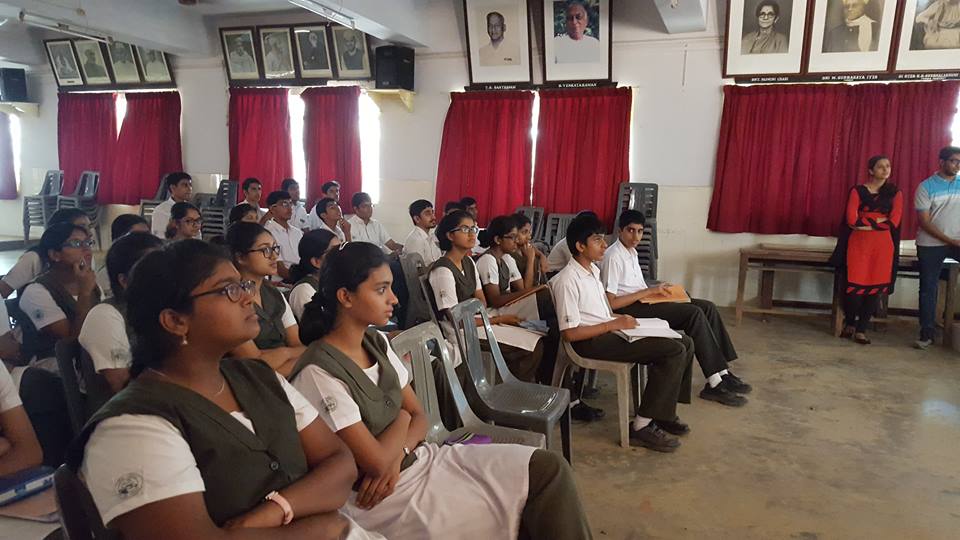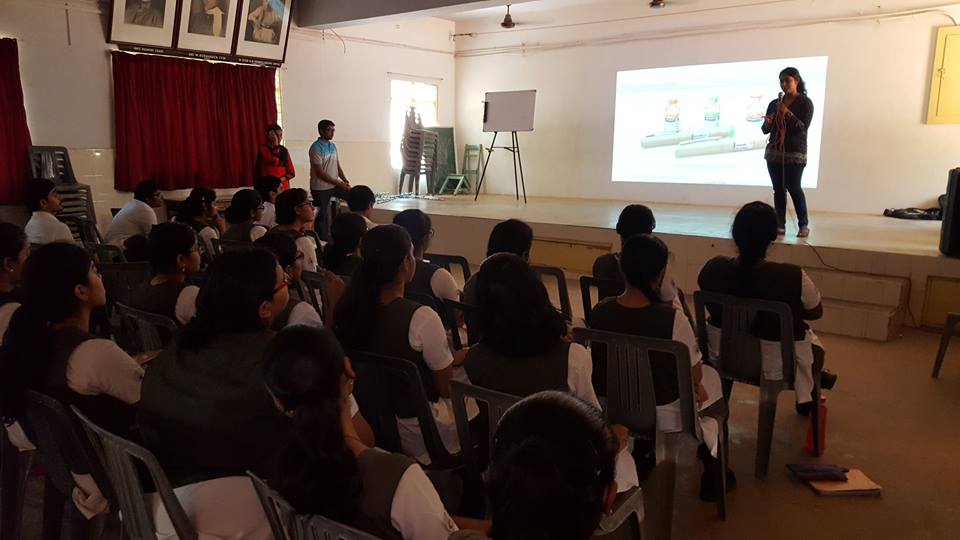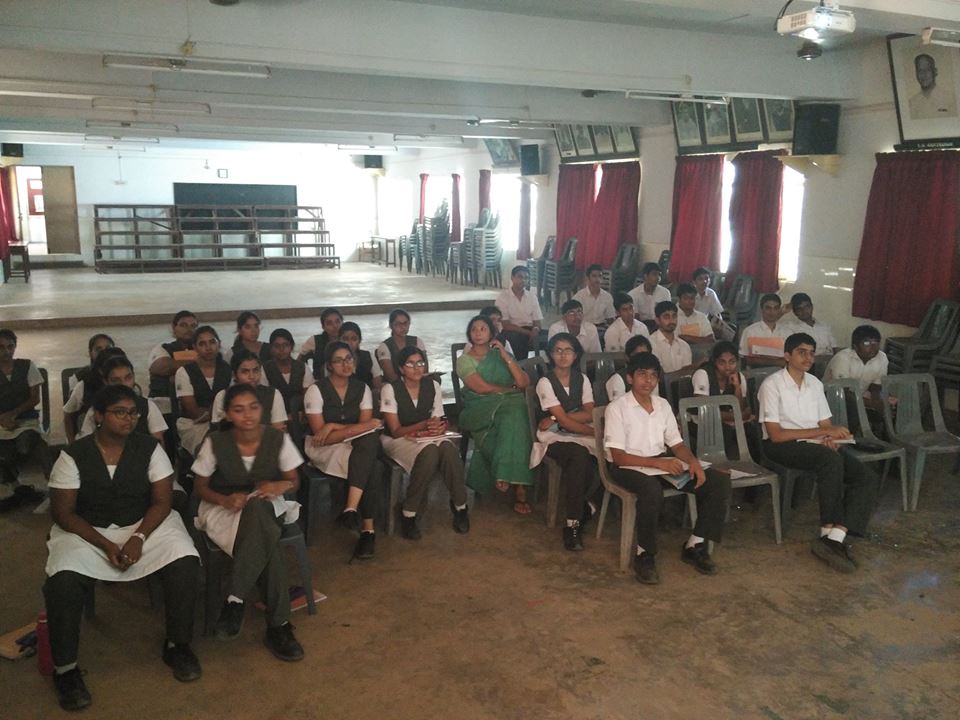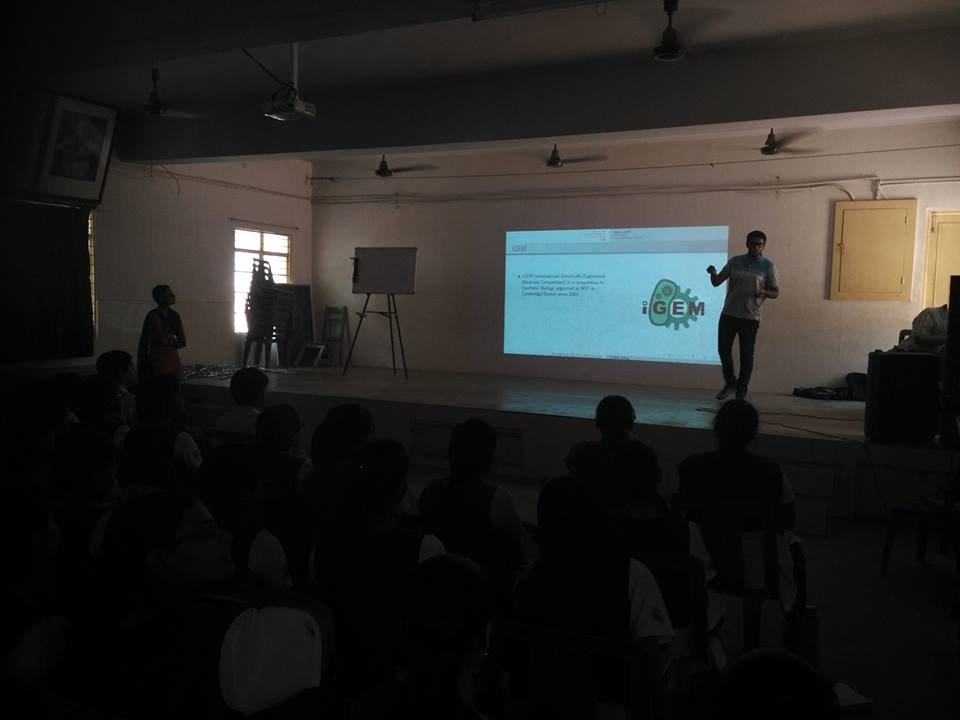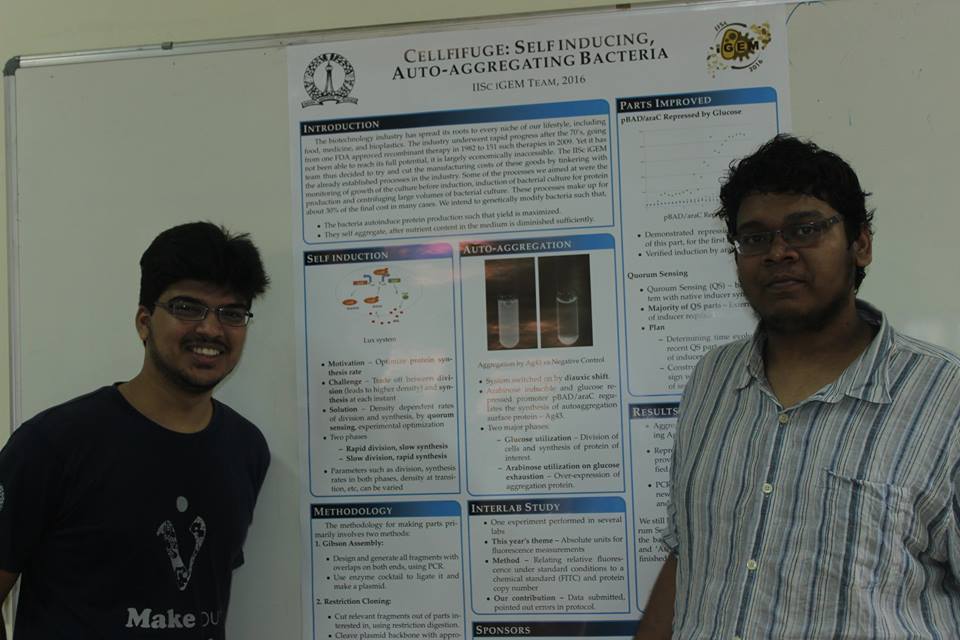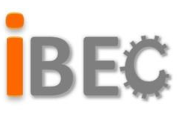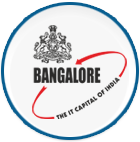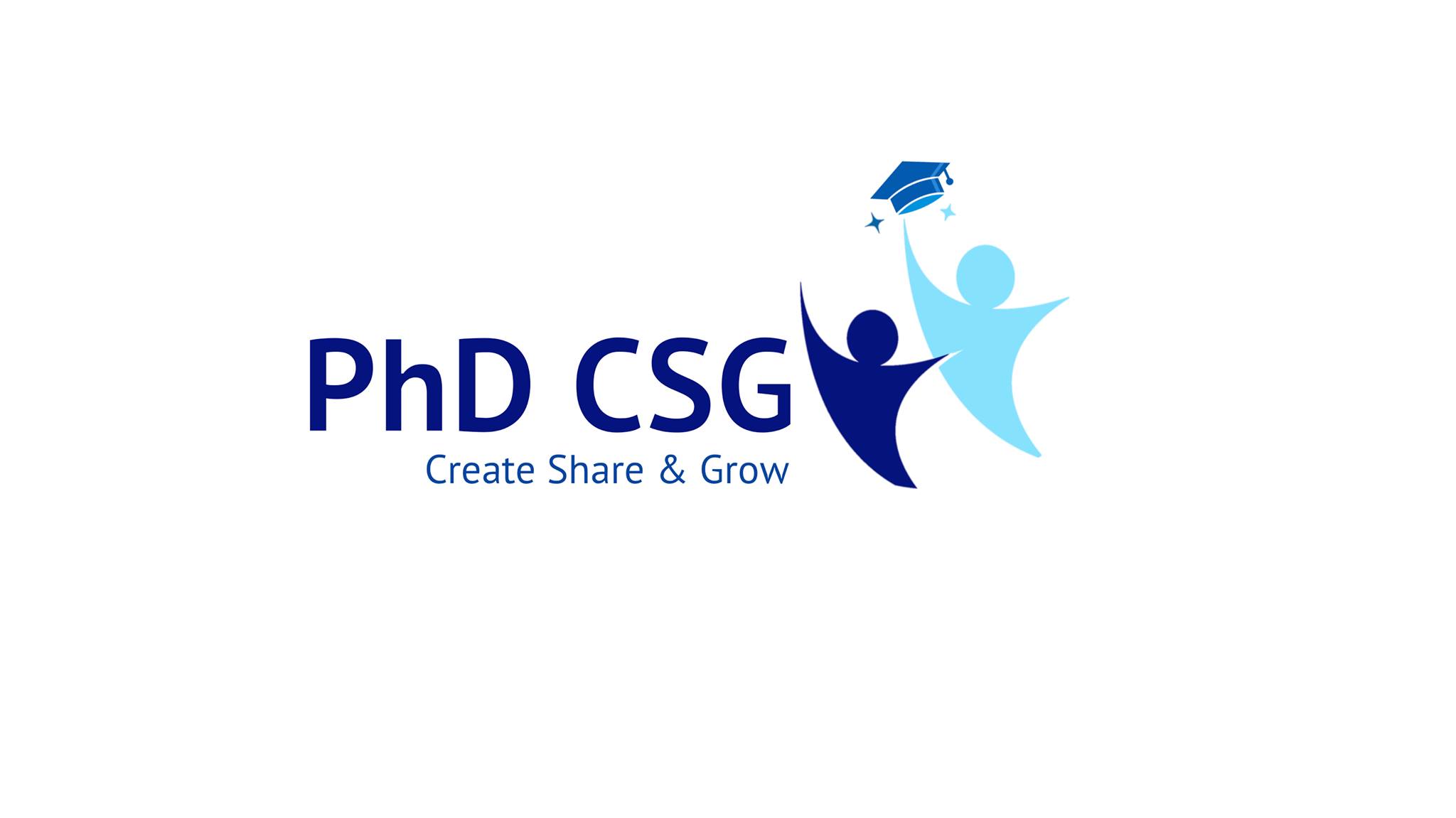Ayanchromium (Talk | contribs) |
Prabaha007 (Talk | contribs) |
||
| (18 intermediate revisions by 3 users not shown) | |||
| Line 66: | Line 66: | ||
<div class="container-fluid"> | <div class="container-fluid"> | ||
<div class="navbar-header"> | <div class="navbar-header"> | ||
| − | + | </div> | |
<div class="collapse navbar-collapse" id="myNavbar"> | <div class="collapse navbar-collapse" id="myNavbar"> | ||
<ul class="nav navbar-nav"> | <ul class="nav navbar-nav"> | ||
| − | <li class="hvr-underline-from-left"><a href="https://2016.igem.org/Team:IISc_Bangalore">Home</a></li> | + | <li class="active hvr-underline-from-left"><a href="https://2016.igem.org/Team:IISc_Bangalore">Home</a></li> |
<li class="hvr-underline-from-left"><a href="https://2016.igem.org/Team:IISc_Bangalore/Team">Team</a></li> | <li class="hvr-underline-from-left"><a href="https://2016.igem.org/Team:IISc_Bangalore/Team">Team</a></li> | ||
| − | + | ||
<li class="dropdown"><a class="dropdown-toggle" data-toggle="dropdown" href="#">Project </a> | <li class="dropdown"><a class="dropdown-toggle" data-toggle="dropdown" href="#">Project </a> | ||
<ul class="dropdown-menu"> | <ul class="dropdown-menu"> | ||
<li><a href="https://2016.igem.org/Team:IISc_Bangalore/Description">Description</a></li> | <li><a href="https://2016.igem.org/Team:IISc_Bangalore/Description">Description</a></li> | ||
| − | <li><a href="https://2016.igem.org/Team:IISc_Bangalore/ | + | <li><a href="https://2016.igem.org/Team:IISc_Bangalore/Experiments">Experiments</a></li> |
| − | <li><a href="https://2016.igem.org/Team:IISc_Bangalore/ | + | <li><a href="https://2016.igem.org/Team:IISc_Bangalore/Results">Results</a></li> |
| − | + | <li><a href="https://2016.igem.org/Team:IISc_Bangalore/Notebook">Notebook</a></li> | |
| − | + | <li><a href="https://2016.igem.org/Team:IISc_Bangalore/Safety">Safety</a></li> | |
</ul> | </ul> | ||
| − | </li> | + | </li> |
| + | |||
<li class="hvr-underline-from-left"><a href="https://2016.igem.org/Team:IISc_Bangalore/Parts">Parts</a></li> | <li class="hvr-underline-from-left"><a href="https://2016.igem.org/Team:IISc_Bangalore/Parts">Parts</a></li> | ||
| − | + | ||
| − | <li class=" | + | <li class="hvr-underline-from-left"><a href="https://2016.igem.org/Team:IISc_Bangalore/Collaborations">Collaborations</a></li> |
<li class="hvr-underline-from-left"><a href="https://2016.igem.org/Team:IISc_Bangalore/Attributions">Attributions</a></li> | <li class="hvr-underline-from-left"><a href="https://2016.igem.org/Team:IISc_Bangalore/Attributions">Attributions</a></li> | ||
<li class="hvr-underline-from-left"><a href="https://2016.igem.org/Team:IISc_Bangalore/Human_Practices">Human Practices</a></li> | <li class="hvr-underline-from-left"><a href="https://2016.igem.org/Team:IISc_Bangalore/Human_Practices">Human Practices</a></li> | ||
| − | <li class="hvr-underline-from-left"><a | + | <li class="hvr-underline-from-left"><a href="https://2016.igem.org/Team:IISc_Bangalore/InterLab">InterLab</a></li> |
| − | href="https://2016.igem.org/Team: | + | <li class="dropdown"><a class="dropdown-toggle" data-toggle="dropdown" href="#">Special Prizes</a> |
| + | <ul class="dropdown-menu"> | ||
| + | <li><a href="https://2016.igem.org/Team:IISc_Bangalore/Integrated_Practices">Integrated Human Practices</a></li> | ||
| + | <li><a href="https://2016.igem.org/Team:IISc_Bangalore/Engagement">Education and Public Engagement</a></li> | ||
| + | <li><a href="https://2016.igem.org/Team:IISc_Bangalore/Model">Model</a></li> | ||
| + | <li><a href="https://2016.igem.org/Team:IISc_Bangalore/Measurement">Measurement</a></li> | ||
| + | <li><a href="https://2016.igem.org/Team:IISc_Bangalore/Entrepreneurship">Entrepreneurship</a></li> | ||
| + | <li><a href="https://2016.igem.org/Team:IISc_Bangalore/Design">Applied Design</a></li> | ||
| + | </ul> | ||
| + | </li> | ||
</ul> | </ul> | ||
| Line 96: | Line 106: | ||
</div> | </div> | ||
</nav> | </nav> | ||
| + | |||
<div class="banner-main"> | <div class="banner-main"> | ||
| Line 138: | Line 149: | ||
<div class="welcome-grids"> | <div class="welcome-grids"> | ||
| − | + | ||
| − | + | ||
| − | + | ||
| − | + | ||
| − | + | ||
| − | + | ||
| − | + | ||
| − | + | ||
| − | + | ||
<div class="row"> | <div class="row"> | ||
<!-- accordian 1 --> | <!-- accordian 1 --> | ||
| Line 161: | Line 164: | ||
<div class="content"> | <div class="content"> | ||
<p class="whitef">The SVCE Indian iGEM meet was held on 23rd July, 2016 at SVCE, Chennai, India.The morning session consisted of presentations by the IIT-Madras, IISc Bangalore and SVCE, each followed by a round of questions from an audience that consisted of SVCE faculty, students and, members of the iGEM teams. | <p class="whitef">The SVCE Indian iGEM meet was held on 23rd July, 2016 at SVCE, Chennai, India.The morning session consisted of presentations by the IIT-Madras, IISc Bangalore and SVCE, each followed by a round of questions from an audience that consisted of SVCE faculty, students and, members of the iGEM teams. | ||
| − | |||
<br><a href="#refer1"><span class="readm hvr-ripple-out">Read more</span></a> | <br><a href="#refer1"><span class="readm hvr-ripple-out">Read more</span></a> | ||
<a href="#refer4"><span class="readm hvr-ripple-out">Photo gallery</span></a> | <a href="#refer4"><span class="readm hvr-ripple-out">Photo gallery</span></a> | ||
| Line 171: | Line 173: | ||
<div class="heading blue"> | <div class="heading blue"> | ||
<span class="glyphicon glyphicon-chevron-down" aria-hidden="true" ></span> | <span class="glyphicon glyphicon-chevron-down" aria-hidden="true" ></span> | ||
| − | <h4> | + | <h4>IIT-Madras collaboration</h4> |
| − | + | ||
</div> | </div> | ||
<div class="content"> | <div class="content"> | ||
| − | + | We collaborated with Team:IIT Madras 2016 on their project on determining noise due to RBS. More details of same can be found <a href="https://2016.igem.org/Team:IIT-Madras/Description">here</a>. | |
| − | + | <br><a href="#refer3" onclick="closeTab()"><span class="readm hvr-ripple-out">Read rest</span></a> | |
| − | + | ||
| − | + | </p> | |
| − | + | ||
</div> | </div> | ||
</div> | </div> | ||
| − | |||
<div class="item col-md-4" data-anijs="if:mouseenter, on: .heading, do: pulse animated, to: $children target"> | <div class="item col-md-4" data-anijs="if:mouseenter, on: .heading, do: pulse animated, to: $children target"> | ||
<div class="heading blue"> | <div class="heading blue"> | ||
<span class="glyphicon glyphicon-chevron-down" aria-hidden="true" ></span> | <span class="glyphicon glyphicon-chevron-down" aria-hidden="true" ></span> | ||
| − | <h4> | + | <h4>Presentations at schools</h4> |
| − | + | ||
</div> | </div> | ||
<div class="content"> | <div class="content"> | ||
| − | + | We made presentations introducing genetic engineering to students of class 11 and 12 (equivalent to high school sophomores and seniors respectively) in 5 different schools across 3 different cities. | |
| − | + | <br><a href="#refer2" onclick="closeTab()"><span class="readm hvr-ripple-out">Read rest</span></a> | |
| − | + | <a href="#refer2p" onclick="closeTab()"><span class="readm hvr-ripple-out">Photo gallery</span></a> | |
| − | <a href="# | + | </p> |
| − | + | ||
</div> | </div> | ||
</div> | </div> | ||
| + | |||
| + | <!-- | ||
| + | <div class="item col-md-4" data-anijs="if:mouseenter, on: .heading, do: pulse animated, to: $children target"> | ||
| + | <div class="heading blue"> | ||
| + | <span class="glyphicon glyphicon-chevron-down" aria-hidden="true" ></span> | ||
| + | <h4> Science Club presentation</h4> | ||
| + | |||
| + | </div> | ||
| + | <div class="content"> | ||
| + | <p class="whitef">We prepared and presented a poster at the poster session by the Indian Institute of Science’s undergraduate science club. The audience consisted mainly of freshman year students. | ||
| + | <br><a href="#" onclick="closeTab()"><span class="readm hvr-ripple-out">Read more</span></a> | ||
| + | <a href="#refer3" onclick="closeTab()"><span class="readm hvr-ripple-out">Photo gallery</span></a> | ||
| + | </p> | ||
| + | </div> | ||
| + | </div> --> | ||
</div> | </div> | ||
| Line 231: | Line 245: | ||
</div> | </div> | ||
</div> | </div> | ||
| − | + | --> <div class="clearfix"></div> | |
</div> | </div> | ||
</div> | </div> | ||
</div> | </div> | ||
| − | </div | + | </div> |
<!--welcome--> | <!--welcome--> | ||
| Line 246: | Line 260: | ||
<div class="row"> | <div class="row"> | ||
<div class="refer mainText col-md-6"> | <div class="refer mainText col-md-6"> | ||
| − | < | + | <p>The SVCE Indian iGEM meet was held on 23rd July, 2016 at SVCE, Chennai, India.The morning session consisted of presentations by the IIT-Madras, IISc Bangalore and SVCE, each followed by a round of questions from an audience that consisted of SVCE faculty, students and, members of the iGEM teams. The question session highlighted some problems in our idea, helped explore possible offshoots of our idea and also told us about how our idea was perceived by a heterogeneous group of individuals who are biotechnology literate. Some of the issues raised during the meet about our idea are summarized below:<br> |
| − | The morning session consisted of presentations by the IIT-Madras, IISc Bangalore and SVCE, each followed by a round of questions from an audience that consisted of SVCE faculty, students and, members of the iGEM teams. | + | |
| − | The question session highlighted some problems in our idea, helped explore possible offshoots of our idea and also told us about how our idea was perceived by a heterogeneous group of individuals who are biotechnology literate. | + | |
| − | Some of the issues raised during the meet about our idea are summarized below: | + | |
<b>a.</b> (<i>Problem</i>) Is the diauxic media composition required for cellfifuge compatible with the complex media used in industrial scale applications? How will modifying the existing media so as to make cellfifuge applicable affect cost of manufacturing? | <b>a.</b> (<i>Problem</i>) Is the diauxic media composition required for cellfifuge compatible with the complex media used in industrial scale applications? How will modifying the existing media so as to make cellfifuge applicable affect cost of manufacturing? | ||
| − | <br>< | + | <br>< |
<b>b.</b> (<i>Problem</i>) What level of contamination by Ag43 is expected after downstream processing? | <b>b.</b> (<i>Problem</i>) What level of contamination by Ag43 is expected after downstream processing? | ||
| − | + | <br> | |
<b>c.</b> (<i>Problem</i>) How does the addition of an extra step in downstream processing, i.e., removing Ag43 by using metal affinity chromatography affect the net cost of protein production using the cellfifuge sysem? | <b>c.</b> (<i>Problem</i>) How does the addition of an extra step in downstream processing, i.e., removing Ag43 by using metal affinity chromatography affect the net cost of protein production using the cellfifuge sysem? | ||
| − | + | <br> | |
<b>d.</b> (<i>Problem</i>) Are any proteins known to associate (chemically) strongly with Ag43? This question has significant impact on the diversity of proteins to which cellfifuge can be applied, if certain proteins of interest associate rather strongly with Ag43, some fraction of it will be removed with the Ag43, reducing yield. | <b>d.</b> (<i>Problem</i>) Are any proteins known to associate (chemically) strongly with Ag43? This question has significant impact on the diversity of proteins to which cellfifuge can be applied, if certain proteins of interest associate rather strongly with Ag43, some fraction of it will be removed with the Ag43, reducing yield. | ||
| − | + | <br> | |
<b>e.</b> (<i>Problem, Offshoot</i>) Is it possible and if so, how can this system be implemented in gram positive bacteria and eukaryotes? This is of special importance if cellfifuge is to be applied to produce proteins with post-translational modifications. | <b>e.</b> (<i>Problem, Offshoot</i>) Is it possible and if so, how can this system be implemented in gram positive bacteria and eukaryotes? This is of special importance if cellfifuge is to be applied to produce proteins with post-translational modifications. | ||
| − | |||
| − | |||
| − | |||
| − | |||
<br> | <br> | ||
| + | <b>f.</b> (<i>Suggestion</i>) The arrangement of the cells in a cluster (aggregated because of Ag43 expression) is a factor that needs to be taken into consideration while calculating the drag force on the cluster and as a result, will affect the sedimentation coefficient of the cluster (the ”rate” at which the cluster settles down). This parameter was included as a part of our model of Ag43 sedimentation because of an SVCE faculty’s opinion.</p><hr> | ||
| + | <p>Some of the issues we raised during the meet about the other team’s ideas:<br> | ||
The afternoon session consisted primarily of a discussion on troubleshooting protocols such as 3A assembly, more specifically, verifying restriction digestion, eliminating self-ligated products etc. | The afternoon session consisted primarily of a discussion on troubleshooting protocols such as 3A assembly, more specifically, verifying restriction digestion, eliminating self-ligated products etc. | ||
| − | Troubleshooting protocols – inputs from our iGEM team towards the SVCE team: | + | Troubleshooting protocols – inputs from our iGEM team towards the SVCE team:<br> |
<b>a.</b> Ampicillin plates should be incubated only for ~16 hours (degradation of Amp, appearance of satellite colonies after that point). Working on a plasmid with a Chloramphenicol resistance in the backbone is preferable to Ampicillin. | <b>a.</b> Ampicillin plates should be incubated only for ~16 hours (degradation of Amp, appearance of satellite colonies after that point). Working on a plasmid with a Chloramphenicol resistance in the backbone is preferable to Ampicillin. | ||
| − | + | <br> | |
<b>b.</b> Verifying Restriction Digestions before 3A assembly: Gel electrophoresis results were inconclusive - one of the digested fragments was only 100bp smaller than the undigested fragment and the resolution using normal sized gels and ladders was not sufficient to see this difference clearly; also, the 100bp fragment expected was not seen. | <b>b.</b> Verifying Restriction Digestions before 3A assembly: Gel electrophoresis results were inconclusive - one of the digested fragments was only 100bp smaller than the undigested fragment and the resolution using normal sized gels and ladders was not sufficient to see this difference clearly; also, the 100bp fragment expected was not seen. | ||
| − | + | <br> | |
| − | We suggested running the gel for a very short period of time (~15 minutes) as the 100bp fragment may have been run out of the gel due to the passage of current for a long time. | + | We suggested running the gel for a very short period of time (~15 minutes) as the 100bp fragment may have been run out of the gel due to the passage of current for a long time.</p> |
| − | A PCR with appropriate primers (anneals to regions on both sides of the restriction site, cannot anneal at the annealing temperature after digestion due to a shorter region of annealing with each digested fragment compared to the undigested fragment) was also suggested to check if the restriction digestion was successful .Possible experimental collaborations were also discussed. | + | <p>A PCR with appropriate primers (anneals to regions on both sides of the restriction site, cannot anneal at the annealing temperature after digestion due to a shorter region of annealing with each digested fragment compared to the undigested fragment) was also suggested to check if the restriction digestion was successful. Possible experimental collaborations were also discussed.</p> |
</div> | </div> | ||
</div> | </div> | ||
| Line 280: | Line 289: | ||
<!--content-middle--> | <!--content-middle--> | ||
<hr class="blackl"> | <hr class="blackl"> | ||
| + | |||
<!--content-middle--> | <!--content-middle--> | ||
<div class="content-middle wthree"> | <div class="content-middle wthree"> | ||
| Line 301: | Line 311: | ||
<html> | <html> | ||
</div> | </div> | ||
| + | </div> | ||
| + | </div> | ||
| + | </div> | ||
| + | </div> | ||
| + | <!--content-middle--> | ||
| + | <!--content-middle--> | ||
| + | <div class="content-middle wthree"> | ||
| + | <div class="container" id="refer3"> | ||
| + | <div class="mid-content wow fadeInRight animated" data-wow-delay=".5s"> | ||
| + | <h3>IIT-Madras</h3> | ||
| + | </div> | ||
| + | <div class="row"> | ||
| + | <div class="refer mainText col-md-6"> | ||
| + | <b>Part preparation</b> | ||
| + | <p>Part_K1956016 was obtained from the IIT Madras team. | ||
| + | BBa_K1956016 was digested with XbaI and PstI and BBa_K525998 was digested with SpeI and XbaI. Both of fragments gel purified (1% agarose gel) and ligated using T4 ligase. The ligation mixture was transformed into E coli DH5α competent cells and transformants were plated on SOB Cam media.</p> | ||
| + | <p>Plasmid miniprep was performed to isolate the assembly product, and named BBa_BBa_K1956046. (Detailed protocols: Restriction double-digest, Agarose gel purification, Ligation, Plasmid mini-prep)</p> | ||
| + | <b>Part characterization:</b> | ||
| + | <p>BBa_BBa_K1956046 was transformed into E coli BL21(DE3) and plated on SOB Cam. An overnight primary culture of a single transformant colony in LB was used to inoculate 30 mL LB media 100 mL conical flasks in triplicates containing different concentrations of IPTG. 200 uL aliquots of the cultures were taken at 1 hour intervals and stored at 40C. 100 uL from these samples were added to 96 well clear bottom, black sided polystyrene plates and OD and fluorescence were measured for the the data for the sam>. The Flu/OD plots for the same are below. (Measurements details are in the raw data files.) is <here></p> | ||
</div> | </div> | ||
</div> | </div> | ||
| Line 310: | Line 339: | ||
<div class="container" id="refer2"> | <div class="container" id="refer2"> | ||
<div class="mid-content wow fadeInRight animated" data-wow-delay=".5s"> | <div class="mid-content wow fadeInRight animated" data-wow-delay=".5s"> | ||
| − | <h3> | + | <h3>In the schools</h3> |
</div> | </div> | ||
<div class="row"> | <div class="row"> | ||
<div class="refer mainText col-md-6"> | <div class="refer mainText col-md-6"> | ||
| − | < | + | <p>We made presentations introducing genetic engineering to students of class 11 and 12 (equivalent to high school sophomores and seniors respectively) in 5 different schools across 3 different cities.<br> |
| − | Broadly, the presentations had 3 parts: | + | Broadly, the presentations had 3 parts:<br> |
<b>a.</b> Definitions of some basic terms used in genetic engineering such as gene, promoter, operator, inducer, reporter etc and how to put together these modular components in constructing genetic circuits. | <b>a.</b> Definitions of some basic terms used in genetic engineering such as gene, promoter, operator, inducer, reporter etc and how to put together these modular components in constructing genetic circuits. | ||
| − | + | <br> | |
<b>b.</b> A simple, binary framework for quantitatively analyzing the outputs of simple genetic circuits. | <b>b.</b> A simple, binary framework for quantitatively analyzing the outputs of simple genetic circuits. | ||
| − | + | <br> | |
<b>c.</b> Introduction to iGEM, our project and some previous years’ projects. | <b>c.</b> Introduction to iGEM, our project and some previous years’ projects. | ||
| − | + | <br> | |
| − | In enhancing the awareness of high school students about genetic engineering and iGEM, most teams undertake some form of <b>a.</b> and <b>c.</b>; however, we think we stand out by including <b>b.</b>, <b>a</b> technique by which students would be able to quantitatively predict the output of the circuits they construct. The objective was to convey that genetic engineering is a diverse area with inputs from biological and more abstract areas of science and engineering.< | + | In enhancing the awareness of high school students about genetic engineering and iGEM, most teams undertake some form of <b>a.</b> and <b>c.</b>; however, we think we stand out by including <b>b.</b>, <b>a</b> technique by which students would be able to quantitatively predict the output of the circuits they construct. The objective was to convey that genetic engineering is a diverse area with inputs from biological and more abstract areas of science and engineering.</p> |
| − | The presentation was followed by a questionnaire presented to the audience to see how the presentation changed the audience’s knowledge of the topics (related to our iGEM project) and their views about the importance of the question addressed by our iGEM project.< | + | <p>The presentation was followed by a questionnaire presented to the audience to see how the presentation changed the audience’s knowledge of the topics (related to our iGEM project) and their views about the importance of the question addressed by our iGEM project.</p> |
| − | The collaboration was during the presentations in Chennai, the city in which our collaborating college, SVCE is located. The point of the collaboration was that the iGEM projects of both the teams could be presented to the students and since our projects were quite different (ours was basic while theirs was applied research) and we could give the students exposure about the challenges in both these types of projects. | + | <p>The collaboration was during the presentations in Chennai, the city in which our collaborating college, SVCE is located. The point of the collaboration was that the iGEM projects of both the teams could be presented to the students and since our projects were quite different (ours was basic while theirs was applied research) and we could give the students exposure about the challenges in both these types of projects.</p? |
</div> | </div> | ||
</div> | </div> | ||
| Line 339: | Line 368: | ||
<div class="refer col-md-6"> | <div class="refer col-md-6"> | ||
<div class"col-md-4 photog"> | <div class"col-md-4 photog"> | ||
| − | + | <span class="galleryTitle" > Vidyamandir</span> | |
| − | + | ||
| − | + | ||
| − | + | ||
| − | + | ||
| − | + | ||
| − | + | ||
| − | + | ||
| − | + | ||
| − | + | ||
| − | + | ||
| − | + | ||
| − | + | ||
<p class="gallerySummary" >Aiswarya Prasad and Shreyas Gopalakrishnan, from the IISc Bangalore iGEM Team and members of the SVCE iGEM Team delivering a talk titled "Synthetic Biology: Using Genes to Make Circuits" to high school students of Vidyamandir, Mylapore, Channai, India.</p> | <p class="gallerySummary" >Aiswarya Prasad and Shreyas Gopalakrishnan, from the IISc Bangalore iGEM Team and members of the SVCE iGEM Team delivering a talk titled "Synthetic Biology: Using Genes to Make Circuits" to high school students of Vidyamandir, Mylapore, Channai, India.</p> | ||
</html> | </html> | ||
<gallery mode="packed-hover"> | <gallery mode="packed-hover"> | ||
| − | + | File:Vm iisc.jpg|The IISc iGEM team with the SVCE iGEM team. | |
| − | File:Vm iisc.jpg| | + | File:Vm1iisc.jpg |
| − | File:Vm1iisc.jpg | + | File:Vm2iisc.jpg |
| − | File:Vm2iisc.jpg | + | File:Vm3iisc.jpg |
| − | File:Vm3iisc.jpg | + | File:Vm4iisc.jpg |
| − | File:Vm4iisc.jpg | + | File:Vm5iisc.jpg |
| − | File:Vm5iisc.jpg | + | |
</gallery> | </gallery> | ||
<html> | <html> | ||
| − | |||
| − | |||
| − | |||
| − | |||
| − | |||
| − | |||
| − | |||
| − | |||
| − | |||
| − | |||
| − | |||
| − | |||
| − | |||
| − | |||
| − | |||
| − | |||
| − | |||
| − | |||
| − | |||
| − | |||
| − | |||
| − | |||
| − | |||
| − | |||
| − | |||
| − | |||
| − | |||
| Line 401: | Line 390: | ||
<!--content-middle--> | <!--content-middle--> | ||
<!--content-middle--> | <!--content-middle--> | ||
| − | <!--content-middle-- | + | <!-- content-middle--<hr> |
<div class="content-middle wthree"> | <div class="content-middle wthree"> | ||
<div class="container" id="refer3"> | <div class="container" id="refer3"> | ||
| Line 425: | Line 414: | ||
</div> | </div> | ||
</div> | </div> | ||
| − | + | --> </div> | |
</div> | </div> | ||
<!--content-middle--> | <!--content-middle--> | ||
Latest revision as of 00:47, 20 October 2016
SVCE Indian iGEM meet
Held on 23rd July, 2016 at SVCE, Chennai, India
The SVCE Indian iGEM meet was held on 23rd July, 2016 at SVCE, Chennai, India.The morning session consisted of presentations by the IIT-Madras, IISc Bangalore and SVCE, each followed by a round of questions from an audience that consisted of SVCE faculty, students and, members of the iGEM teams.
Read more
Photo gallery
IIT-Madras collaboration
Presentations at schools
Read rest Photo gallery
SVCE Indian iGEM meet
The SVCE Indian iGEM meet was held on 23rd July, 2016 at SVCE, Chennai, India.The morning session consisted of presentations by the IIT-Madras, IISc Bangalore and SVCE, each followed by a round of questions from an audience that consisted of SVCE faculty, students and, members of the iGEM teams. The question session highlighted some problems in our idea, helped explore possible offshoots of our idea and also told us about how our idea was perceived by a heterogeneous group of individuals who are biotechnology literate. Some of the issues raised during the meet about our idea are summarized below:
a. (Problem) Is the diauxic media composition required for cellfifuge compatible with the complex media used in industrial scale applications? How will modifying the existing media so as to make cellfifuge applicable affect cost of manufacturing?
<
b. (Problem) What level of contamination by Ag43 is expected after downstream processing?
c. (Problem) How does the addition of an extra step in downstream processing, i.e., removing Ag43 by using metal affinity chromatography affect the net cost of protein production using the cellfifuge sysem?
d. (Problem) Are any proteins known to associate (chemically) strongly with Ag43? This question has significant impact on the diversity of proteins to which cellfifuge can be applied, if certain proteins of interest associate rather strongly with Ag43, some fraction of it will be removed with the Ag43, reducing yield.
e. (Problem, Offshoot) Is it possible and if so, how can this system be implemented in gram positive bacteria and eukaryotes? This is of special importance if cellfifuge is to be applied to produce proteins with post-translational modifications.
f. (Suggestion) The arrangement of the cells in a cluster (aggregated because of Ag43 expression) is a factor that needs to be taken into consideration while calculating the drag force on the cluster and as a result, will affect the sedimentation coefficient of the cluster (the ”rate” at which the cluster settles down). This parameter was included as a part of our model of Ag43 sedimentation because of an SVCE faculty’s opinion.
Some of the issues we raised during the meet about the other team’s ideas:
The afternoon session consisted primarily of a discussion on troubleshooting protocols such as 3A assembly, more specifically, verifying restriction digestion, eliminating self-ligated products etc.
Troubleshooting protocols – inputs from our iGEM team towards the SVCE team:
a. Ampicillin plates should be incubated only for ~16 hours (degradation of Amp, appearance of satellite colonies after that point). Working on a plasmid with a Chloramphenicol resistance in the backbone is preferable to Ampicillin.
b. Verifying Restriction Digestions before 3A assembly: Gel electrophoresis results were inconclusive - one of the digested fragments was only 100bp smaller than the undigested fragment and the resolution using normal sized gels and ladders was not sufficient to see this difference clearly; also, the 100bp fragment expected was not seen.
We suggested running the gel for a very short period of time (~15 minutes) as the 100bp fragment may have been run out of the gel due to the passage of current for a long time.
A PCR with appropriate primers (anneals to regions on both sides of the restriction site, cannot anneal at the annealing temperature after digestion due to a shorter region of annealing with each digested fragment compared to the undigested fragment) was also suggested to check if the restriction digestion was successful. Possible experimental collaborations were also discussed.
IIT-Madras
Part_K1956016 was obtained from the IIT Madras team. BBa_K1956016 was digested with XbaI and PstI and BBa_K525998 was digested with SpeI and XbaI. Both of fragments gel purified (1% agarose gel) and ligated using T4 ligase. The ligation mixture was transformed into E coli DH5α competent cells and transformants were plated on SOB Cam media.
Plasmid miniprep was performed to isolate the assembly product, and named BBa_BBa_K1956046. (Detailed protocols: Restriction double-digest, Agarose gel purification, Ligation, Plasmid mini-prep)
Part characterization:BBa_BBa_K1956046 was transformed into E coli BL21(DE3) and plated on SOB Cam. An overnight primary culture of a single transformant colony in LB was used to inoculate 30 mL LB media 100 mL conical flasks in triplicates containing different concentrations of IPTG. 200 uL aliquots of the cultures were taken at 1 hour intervals and stored at 40C. 100 uL from these samples were added to 96 well clear bottom, black sided polystyrene plates and OD and fluorescence were measured for the the data for the sam>. The Flu/OD plots for the same are below. (Measurements details are in the raw data files.) is
In the schools
We made presentations introducing genetic engineering to students of class 11 and 12 (equivalent to high school sophomores and seniors respectively) in 5 different schools across 3 different cities.
Broadly, the presentations had 3 parts:
a. Definitions of some basic terms used in genetic engineering such as gene, promoter, operator, inducer, reporter etc and how to put together these modular components in constructing genetic circuits.
b. A simple, binary framework for quantitatively analyzing the outputs of simple genetic circuits.
c. Introduction to iGEM, our project and some previous years’ projects.
In enhancing the awareness of high school students about genetic engineering and iGEM, most teams undertake some form of a. and c.; however, we think we stand out by including b., a technique by which students would be able to quantitatively predict the output of the circuits they construct. The objective was to convey that genetic engineering is a diverse area with inputs from biological and more abstract areas of science and engineering.
The presentation was followed by a questionnaire presented to the audience to see how the presentation changed the audience’s knowledge of the topics (related to our iGEM project) and their views about the importance of the question addressed by our iGEM project.
The collaboration was during the presentations in Chennai, the city in which our collaborating college, SVCE is located. The point of the collaboration was that the iGEM projects of both the teams could be presented to the students and since our projects were quite different (ours was basic while theirs was applied research) and we could give the students exposure about the challenges in both these types of projects.
In the Schools
Photo gallery
Aiswarya Prasad and Shreyas Gopalakrishnan, from the IISc Bangalore iGEM Team and members of the SVCE iGEM Team delivering a talk titled "Synthetic Biology: Using Genes to Make Circuits" to high school students of Vidyamandir, Mylapore, Channai, India.

